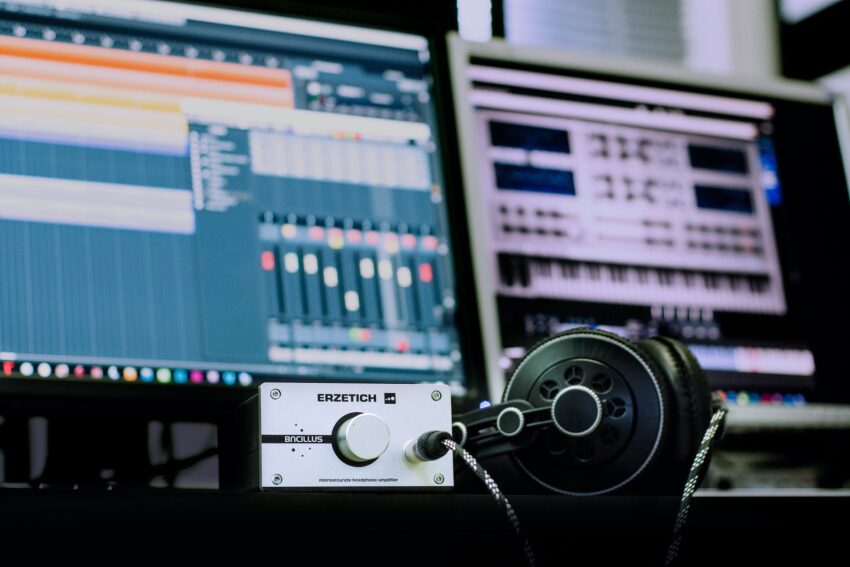implementing interactive music systems in games
Implementing interactive music systems in games. Interactive music systems in games have evolved over the years, allowing game developers to create more immersive worlds and narratives for gamers. But how do you implement these systems in your game? In this blog post, we will take a deep dive into understanding interactive music systems in games and their role in enhancing the gaming experience. We will also explore techniques for composing interactive game music, including horizontal re-sequencing, vertical remixing, tempo alteration, and harmonic approach. Additionally, we will discuss the necessary tools for building interactive music systems such as game engines and audio middleware.

Understanding Interactive Soundtracks in Games
Game music plays a vital role in enhancing the overall gaming experience. It has the power to create an immersive and captivating environment for players. With interactive music systems, game developers can take it a step further. These systems allow for dynamic and adaptive soundtracks that respond to the player’s actions and decisions in real time. By implementing interactive music, game designers can add depth and immersion to gameplay, making it a truly interactive and personalized experience. When it comes to game music, there are various techniques and approaches that video game composers can use to create unique and memorable compositions. From melodies and instrumentation to stingers and background music, each piece of music is carefully crafted to enhance the gaming experience. Experimentation with different approaches and musical events can lead to innovative and engaging interactive music techniques. Understanding the impact of interactive music in games is crucial for game composers and audio designers alike.
The Role of Interactive Music in Enhancing Gaming Stingers
Interactive music plays a crucial role in enhancing the gaming experience. It goes beyond traditional background music, creating an immersive and personalized journey for players. By adapting to the player’s actions, interactive music adds emotional engagement and a unique touch to each gameplay. It heightens tension and excitement during key moments, intensifying the overall experience. Video game composers utilize various techniques and experimentation with instrumentation, melodies, and sound effects to create interactive music that seamlessly integrates with the gameplay. The real-time nature of interactive music allows it to respond dynamically to the player’s choices, creating a more engaging and immersive environment. With the use of interactive music techniques, such as vertical remixing and horizontal re-sequencing, game audio designers can craft musical events that align with the different approaches and genres of video games. This brings a whole new level of interactivity to enhance the overall gaming experience.
implementing interactive music systems in games
Techniques for Composers of Interactive Game Music
Techniques for Composing Interactive Game Music involve various methods to enhance the player’s gaming experience through music. One technique is horizontal re-sequencing, which allows for seamless transitions between different musical sections. This technique ensures that the music adapts and flows with the gameplay in a natural and immersive way. Another technique is vertical remixing, which enables composers to create different combinations of musical elements. By remixing and rearranging melodies, instrumentation, and sound effects, composers can provide a unique and dynamic musical experience for gamers. Additionally, tempo alteration is another effective technique in game music composition. It involves matching the pace of the gameplay and creating intensity by adjusting the tempo of the background music. These techniques, like horizontal re-sequencing, vertical remixing, and tempo alteration, are essential for creating interactive music systems in games.
Horizontal Re-sequencing and Vertical Remixing
Horizontal re-sequencing involves the rearrangement of existing musical segments, allowing for the creation of a new composition that seamlessly flows together. This technique provides video game composers with the opportunity to experiment with different approaches to create unique melodies and instrumentation. On the other hand, vertical remixing involves layering multiple musical elements on top of one another, resulting in a dynamic and interactive soundtrack for the game. By utilizing these interactive music techniques, game audio can adapt in real-time to the player’s actions, enhancing the overall gameplay experience. Collaboration between game designers and composers is crucial in implementing successful interactive music systems, ensuring that the musical content aligns with the gameplay and effectively enhances the gaming experience. Additionally, the use of adaptive audio engines and middleware can simplify the process of integrating interactive music into video games, saving composers a significant amount of time and effort.
implementing interactive music systems in games
Utilizing Tempo Alteration and Harmonic Approach
Tempo alteration and harmonic approach play crucial roles in implementing interactive music systems in games. By strategically adjusting the tempo, game developers can synchronize the music with the pacing and intensity of gameplay, enhancing the overall player experience. Additionally, employing a harmonically consistent approach, using similar keys or chords throughout the game, can create a cohesive and immersive musical journey for players. Interactive music systems, such as adaptive music, further elevate the gaming experience by responding to player actions and game events in real time, ensuring a dynamic and engaging soundtrack. Dynamic music cues, carefully timed and implemented, have the potential to heighten emotional impact during key moments in the game, reinforcing the narrative and player engagement. Collaborating with skilled composers or music producers is essential in achieving a polished and professional sound that aligns with the game’s unique vision and artistic direction.
Necessary Tools for Building Interactive Music Systems
When it comes to implementing interactive music systems in games, there are several necessary tools that developers and composers need to have at their disposal. One such tool is a digital audio workstation (DAW), which allows for the creation and editing of music. These software programs provide a platform for composing melodies, experimenting with different instrumentation, and adding sound effects.
Middleware software, like FMOD or Wwise, is another essential tool for integrating interactive music into games. These programs offer real-time audio design capabilities, allowing composers to create adaptive music that responds to gameplay events. Additionally, programming languages such as C++ or Python are needed to code the interactive music system itself.
Introduction to Gameplay Audio
As players dive into the captivating world of games, the role of gameplay audio becomes more crucial than ever. It is not just about the graphics and controls; it’s about creating a complete sensory experience that immerses players in the virtual realm. Gameplay audio includes all the sounds, from background music to sound effects, that enhance the player’s engagement and bring the game to life.
implementing interactive music systems in games
Prioritization in Interactive Music Midi
In the realm of interactive music implementation, prioritization plays a crucial role. One must carefully identify the most significant moments within the game that necessitate interactive music. By doing so, composers and audio designers can focus their efforts on enhancing these key moments and creating an immersive experience for players.
Planning is another essential aspect of prioritization. Game developers need to map out how the music will respond to player actions or in-game events. Consideration of technical limitations and available resources is also paramount. Understanding the capabilities of the chosen audio middleware and programming languages will aid in making informed decisions during the implementation process.
What Factors to Prioritize in Game Music Design?
Prioritizing game music design involves considering the game genre, storyline, and setting to create an immersive experience. Emotions and moods that the music evokes are important, along with budget and resources for creation. Collaboration between developers, composers, and sound designers is crucial for effective implementation.
Creating Initial Music States for Interaction
When implementing interactive music systems in games, one crucial step is creating initial music states for interaction. To begin, it is important to determine the purpose and goal of the interactive music system. This involves understanding how the music will enhance the gameplay experience and contribute to the overall narrative. Once the purpose is clear, the next step is to create multiple potential music states for each section of the game. This includes composing different melodies, experimenting with instrumentation, and considering the unique ways in which the music can adapt to player actions. Planning out how the music will transition between states based on player actions is also essential. This involves utilizing techniques such as stingers, real-time sound effects, and dynamic musical events. By implementing a dynamic music system that can adapt to changes in gameplay, game composers can create immersive and interactive musical experiences for gamers.
How can Expanded Music States Improve Game Interactivity?
Expanded music states have the potential to greatly enhance game interactivity. By allowing for dynamic and responsive music, the game’s soundtrack can adapt to player actions and the environment, creating a more immersive experience. Implementing expanded music states requires collaboration between designers and composers to ensure a seamless integration.
The dsp Conclusion
In conclusion, implementing interactive music systems in games can greatly enhance the gaming experience. Interactive music adds depth and immersion to the gameplay, creating a more engaging and dynamic environment for players. Techniques such as horizontal re-sequencing, vertical remixing, tempo alteration, and harmonic approach allow for adaptive and responsive music that aligns with the player’s actions and emotions. Utilizing game engines and audio middleware provides the necessary tools and resources for building interactive music systems. Prioritizing factors such as gameplay cues, emotional impact, and seamless transitions ensures a cohesive and satisfying musical experience. By creating initial music states for interaction, game developers can further improve game interactivity and player involvement. Follow on Instagram.

